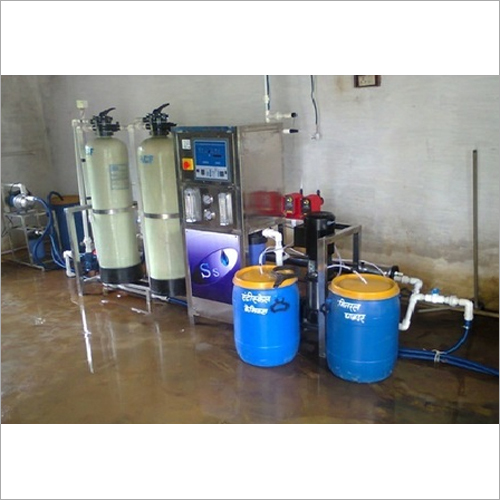
Effluent Treatment Plant
Product Details:
- Product Type Effluent Treatment Plant
- Automatic Grade Semi Automatic
- Material Steel
- Water Source Other
- Power Source Electric
- Click to view more
Effluent Treatment Plant Price And Quantity
- 100000.00 INR/Piece
- 01 Piece
Effluent Treatment Plant Product Specifications
- Other
- Steel
- Semi Automatic
- Electric
- Effluent Treatment Plant
Effluent Treatment Plant Trade Information
- 100 Piece Per Day
- 2 Week
- West Bengal
Product Description
An effluent treatment plant can have the following qualities and advantages:
Features of Effluent Treatment Plants:
1. Pre-Treatment: To remove big particles, oils, and to modify the pH of the wastewater, the ETP frequently uses pre-treatment procedures such screening, oil and grease removal, and pH correction.
2. Primary Treatment: The first step in the treatment process is the physical removal of suspended solids using techniques like flotation or sedimentation, which enables the solids to settle and the scum from the sludge.
3. Secondary Treatment: In the secondary treatment step, organic debris and nutrients present in the wastewater are broken down and removed using biological processes such activated sludge, trickling filters, or biofilters.
4. Tertiary Treatment: Tertiary treatment further cleans the effluent by removing any leftover pollutants, pathogens, or dissolved materials utilising cutting-edge techniques such filtration, chemical precipitation, disinfection (such as chlorination, UV treatment), or membrane filtration.
5. Sludge Treatment: To minimise volume and prepare it for disposal or beneficial reuse, the sludge produced during the treatment process is handled separately using procedures like digestion, dewatering, or drying.
Benefits of Effluent Treatment Plants:
1. Effluent treatment for environmental protection By eliminating contaminants and toxic compounds from industrial or municipal wastewater and limiting their release into water bodies or the soil, plants play a critical role in environmental protection.
2. Regulation Compliance: Proper ETP implementation assures compliance with environmental laws and licences, preventing fines and reputational hazards.
3. Water Resource Conservation: By lowering the demand on freshwater sources and encouraging sustainable water management practises, treatment and reuse of wastewater can aid in water resource conservation.
4. Water contamination is avoided thanks to ETPs, which keep receiving water bodies clean and ecosystems intact by eliminating contaminants, suspended solids, nutrients, and compounds from wastewater.
5. Protection of Public Health: By eliminating impurities and pathogens, ETPs reduce the danger of waterborne illnesses and guarantee the security of water resources utilised for diverse purposes.
6. Resource Recovery: Sludge treatment in ETPs can provide biogas for energy production and allow for the extraction of priceless resources like phosphorous or metals for reuse, advancing the ideas of the circular economy.
7. Cost Savings: By lowering water usage, minimising environmental effect, and avoiding potential fines or legal repercussions connected with non-compliance, a properly implemented ETP can result in cost savings.
Environmental protection, regulatory compliance, water resource conservation, water pollution prevention, public health protection, resource recovery, and cost savings are just a few of the advantages that effluent treatment plants provide. In order to ensure sustainable and ethical water management practises, they are essential for businesses and municipalities to handle their wastewater properly.
- Screen chambers / Grit Chambers
- Rotary Drum Screens
- Flash Mixers
- Floculators
- Aerobic and Anaerobic Reactors
- Primary and Secondary Tube Settlers
- Membrane Bio Reactors
- Ultra Filteration Systems
- Tertiary Treatment of Filtration
- UV Photoelectric Treatment
- Ozonation Dis-Infection system
- Reverse Osmosis Units
- Systems are available from 10 KLD (10 M3/day) up to 2000 M3/day (2 MLD)

Price:
- 50
- 100
- 200
- 250
- 500
- 1000+
Other Products in 'Water Treatment Plant' category
 |
SO-SAFE TECHNOLOGIES & SERVICES
All Rights Reserved.(Terms of Use) Developed and Managed by Infocom Network Private Limited. |









